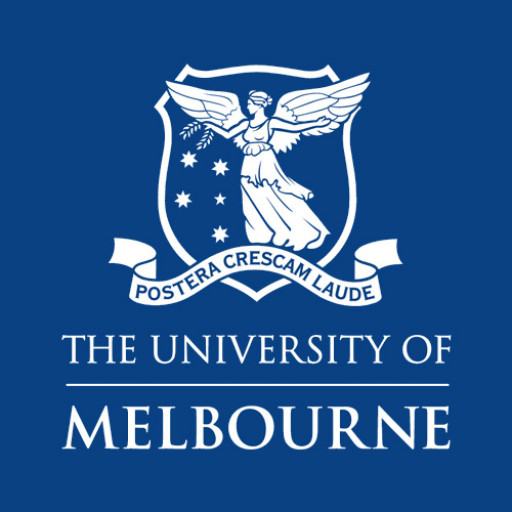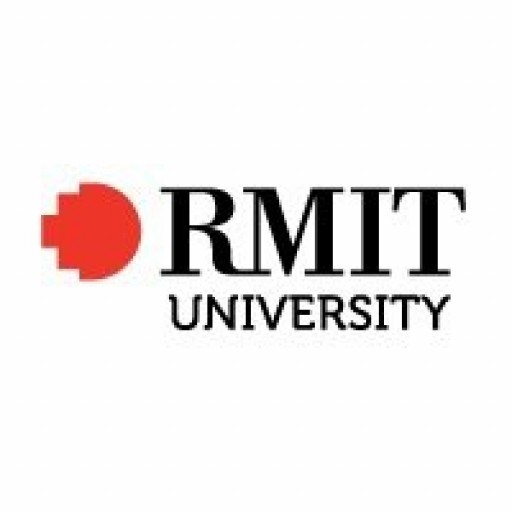Photos of university / #unimelb
Landscape Architecture at The University of Melbourne is a dynamic and innovative program designed to equip students with the skills and knowledge necessary to create sustainable, functional, and aesthetically pleasing outdoor spaces. This undergraduate degree blends art, science, and technology to prepare graduates for careers in urban planning, environmental management, landscape design, and conservation. Throughout the course, students engage in hands-on projects, fieldwork, and studio-based learning, fostering a deep understanding of ecological processes, site analysis, and design principles. The curriculum emphasizes sustainable design practices, cultural heritage, and community engagement, ensuring that graduates can contribute positively to the development of resilient and vibrant public spaces. Students benefit from state-of-the-art facilities, expert faculty, and partnerships with industry professionals, providing a practical and theoretical foundation. The program encourages critical thinking, creativity, and collaboration, equipping students to tackle complex environmental and societal challenges through innovative landscape solutions. Additionally, the university's strong emphasis on research and sustainability principles prepares students for lifelong learning and leadership in the evolving landscape architecture industry. Graduates of this program are well-positioned to pursue licensure and careers in various sectors, including government agencies, private consulting firms, environmental organizations, and urban development projects. With a comprehensive curriculum and a focus on real-world applications, the Landscape Architecture program at The University of Melbourne offers a rigorous and rewarding educational experience for aspiring landscape architects committed to designing a sustainable future.
MASTER OF LANDSCAPE ARCHITECTURE 3-YEAR STREAM (ENTRY WITH A DEGREE IN ANY DISCIPLINE)
| SEMESTER 1 | |
|---|---|
| POINTS | |
| Landscape Studio 1: Design TechniquesCORE | 25 |
| Landscape PlantsCORE | 12.5 |
| Shaping the LandscapeCORE | 12.5 |
| SEMESTER 2 | |
|---|---|
| POINTS | |
| Landscape Studio 2: Site and DesignCORE | 25 |
| Performative EcologiesCORE | 12.5 |
| History of Landscape ArchitectureCORE | 12.5 |
| SEMESTER 3 | |
|---|---|
| POINTS | |
| Landscape Studio 3 SpeculationsCORE | 25 |
| Contemporary Landscape TheoryCORE | 12.5 |
| Landscape Architecture ElectiveELECTIVE | 12.5 |
| SEMESTER 4 | |
|---|---|
| POINTS | |
| Landscape Studio 4 StrategiesCORE | 25 |
| Landscape Detail DesignCORE | 12.5 |
| Landscape Architecture ElectiveELECTIVE | 12.5 |
| SEMESTER 5 | |
|---|---|
| POINTS | |
| Landscape Studio 5:Sustainable UrbanismCORE | 25 |
| Constructed EcologiesCORE | 12.5 |
| Multidisciplinary ElectiveELECTIVE | 12.5 |
| SEMESTER 6 | |
|---|---|
| POINTS | |
| Landscape Architecture Design ThesisCORE | 25 |
| Landscape PracticeCORE | 12.5 |
| Multidisciplinary ElectiveELECTIVE | 12.5 |
MASTER OF LANDSCAPE ARCHITECTURE 2-YEAR STREAM (ENTRY WITH LANDSCAPE ARCHITECTURE MAJOR)
| SEMESTER 1 | |
|---|---|
| POINTS | |
| Landscape Studio 3 SpeculationsCORE | 25 |
| Contemporary Landscape TheoryCORE | 12.5 |
| Landscape Architecture ElectiveCORE | |
| SEMESTER 2 | |
|---|---|
| POINTS | |
| Landscape Studio 4 StrategiesCORE | 25 |
| Landscape Detail DesignCORE | 12.5 |
| Landscape Architecture ElectiveELECTIVE | 12.5 |
| SEMESTER 3 | |
|---|---|
| POINTS | |
| Landscape Studio 5:Sustainable UrbanismCORE | 25 |
| Constructed EcologiesCORE | 12.5 |
| Multidisciplinary ElectiveELECTIVE | 12.5 |
| SEMESTER 4 | |
|---|---|
| POINTS | |
| Landscape Architecture Design ThesisCORE | 25 |
| Landscape PracticeCORE | 12.5 |
| Multidisciplinary ElectiveELECTIVE | 12.5 |
The entry requirements for the Master of Landscape Architecture are different depending on your academic background.
Study Landscape Architecture over two years
- Duration: 2 years full-time / 4 years part-time
- Study mode: On-campus only – Parkville campus
- Intake: Semester 1/Semester 2
- Academic background: You have a three-year undergraduate degree in landscape architecture
You need to meet the following criteria for successful entry to the program:
- A minimum three-year undergraduate degree with a landscape architecture major with a weighted average of at least 65%, or equivalent to the University of Melbourne grading scheme.
- A personal statement of up to 500 words outlining relevant prior study and work experience, and motivation to undertake the program.
- A design portfolio.
Design portfolio requirements
You must submit a design portfolio focussing on design work (rather than, for example, life or still-life drawing skills). If you are submitting work done in the context of employment, you should explain your role in the work produced with brief notes.
Images and drawings presented in the portfolio should be reproduced at sufficient scale and resolution to be clearly readable. Elaborate formats that reduce the available page space for the design images should be avoided. It is most helpful to see a variety of drawings and images: free hand diagrams, computer images, two-dimensional (plans, sections, elevations) and three-dimensional studies, and photographs of physical models.
Please note meeting the minimum entry requirements is not a guarantee of entry.
Study Master of Landscape Architecture over three years.
- Duration: 3 years full-time or 6 years part-time
- Intake: Semester 1 only
- Study mode: On-campus only – Parkville campus
- Academic background: You have completed an undergraduate degree but it is not in landscape architecture
You need to meet the following criteria for successful entry to the program:
- An undergraduate degree in any discipline with a weighted average of at least 65%, or equivalent to the University of Melbourne grading scheme.
- A personal statement of no more than 500 words which outlines relevant prior study, work experience and motivation to undertake the program. This should include evidence of your interest in design and aptitude for creative thinking through design. Evidence can include photographic essays, photographs of executed works of visual art, prose, published writing, graphic design, records of multi-media design and design processes from other disciplines. This material should be incorporated into the personal statement.
Design portfolio requirements
A design portfolio is not required for entry into the 300 point stream.
The Selection Committee may conduct interviews or tests and may call for referee reports and employer references to clarify any of the points above.
Please note meeting the minimum entry requirements is not a guarantee of entry.
The University of Melbourne offers a comprehensive approach to financing studies for its Landscape Architecture programs, designed to support both domestic and international students throughout their academic journey. Domestic students have access to a variety of financial assistance options, including government supported schemes such as HECS-HELP, which allows eligible students to defer part or all of their student contributions. Additionally, students may apply for scholarships, grants, and bursaries offered by the university, faculty, or external organizations to help offset tuition fees and living expenses. These scholarships are often awarded based on academic achievement, financial need, or particular criteria relevant to students' backgrounds and interests.
International students enrolling in the Landscape Architecture program are required to pay tuition fees upfront or through approved payment plans. The university provides several payment options, including annual or semester-based fee payments, and possibly installment plans for eligible students. International students are also encouraged to explore external scholarship opportunities, some of which are specifically tailored for students in design and environmental fields, like landscape architecture. It is important for prospective students to carefully review the estimated total program costs, which include tuition, accommodation, health insurance (such as Overseas Student Health Cover), and other living expenses, to ensure adequate financial planning.
In addition to scholarships and government schemes, students may seek financial aid through bank loans or sponsorships, and some may be eligible for part-time work opportunities both on-campus and off-campus to supplement their income. The university's student services department offers guidance and assistance with financial planning, application procedures, and eligibility criteria for various funding options. Fees are subject to change annually, and prospective students are advised to consult the university’s official website for the most current fee schedule and available financial support programs. Overall, the University of Melbourne aims to facilitate accessible education through diverse financing options, ensuring that talented students can pursue their studies in Landscape Architecture without undue financial hardship.
The Bachelor of Design in Landscape Architecture at the University of Melbourne is a comprehensive undergraduate program that prepares students to become professional landscape architects capable of designing sustainable, functional, and aesthetically pleasing outdoor spaces. The program combines theoretical knowledge with practical skills, emphasizing a multidisciplinary approach to landscape design, planning, and environmental management. Throughout the course, students explore topics such as ecological design, urban and regional planning, conservation, horticulture, cultural landscape studies, and landscape technology. The curriculum offers a blend of studio-based learning, lectures, workshops, and real-world projects, enabling students to develop innovative design solutions tailored to diverse contexts. Students learn to analyze landscape sites, understand environmental constraints, and create designs that promote ecological resilience and community well-being. The program encourages engagement with contemporary issues such as climate change adaptation, urban sprawl, biodiversity loss, and sustainable development, ensuring graduates are equipped to address global challenges through local solutions. Additionally, students gain proficiency with design software tools and graphic communication skills essential for professional practice. The program also fosters collaboration across disciplines and promotes ethical practices in landscape architecture. Practical experience is integrated through industry placements, internships, and collaborative projects with government bodies, environmental organizations, and private firms. Graduates of the Bachelor of Design in Landscape Architecture often pursue careers in landscape planning, environmental consultancy, urban design, government agencies, and private practices, contributing to the creation of sustainable outdoor environments that enhance quality of life. The program is accredited by the Australian Institute of Landscape Architects (AILA), ensuring that graduates meet industry standards and are recognized professionally within Australia and internationally. Overall, the program aims to develop creative, environmentally conscious, and technically skilled landscape architects who can contribute meaningfully to society through innovative landscape solutions.









